We Swapped Our Hi-Fi For One With Fourteen Speakers: The Cambridge Audio Evo One
When we discovered that some boffins crammed fourteen speakers into the Cambridge Audio Evo One we couldn't wait to review this all-in-one streamer. But, is more really more?
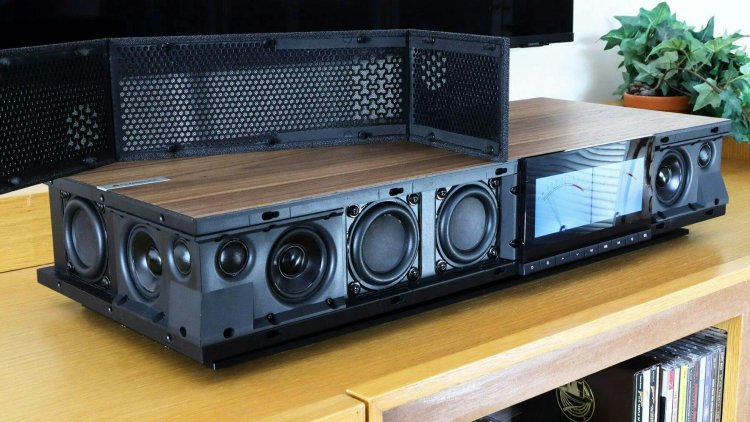
We've owned or tested a few audio systems in our time, but none that could boast quite as many speakers as the Cambridge Audio Evo One. And that includes hi-fi separates, multi-room setups, 7.1 home cinema systems and many more. So, as we unpacked this premium wireless streaming unit, the big question was: who really needs fourteen speakers?
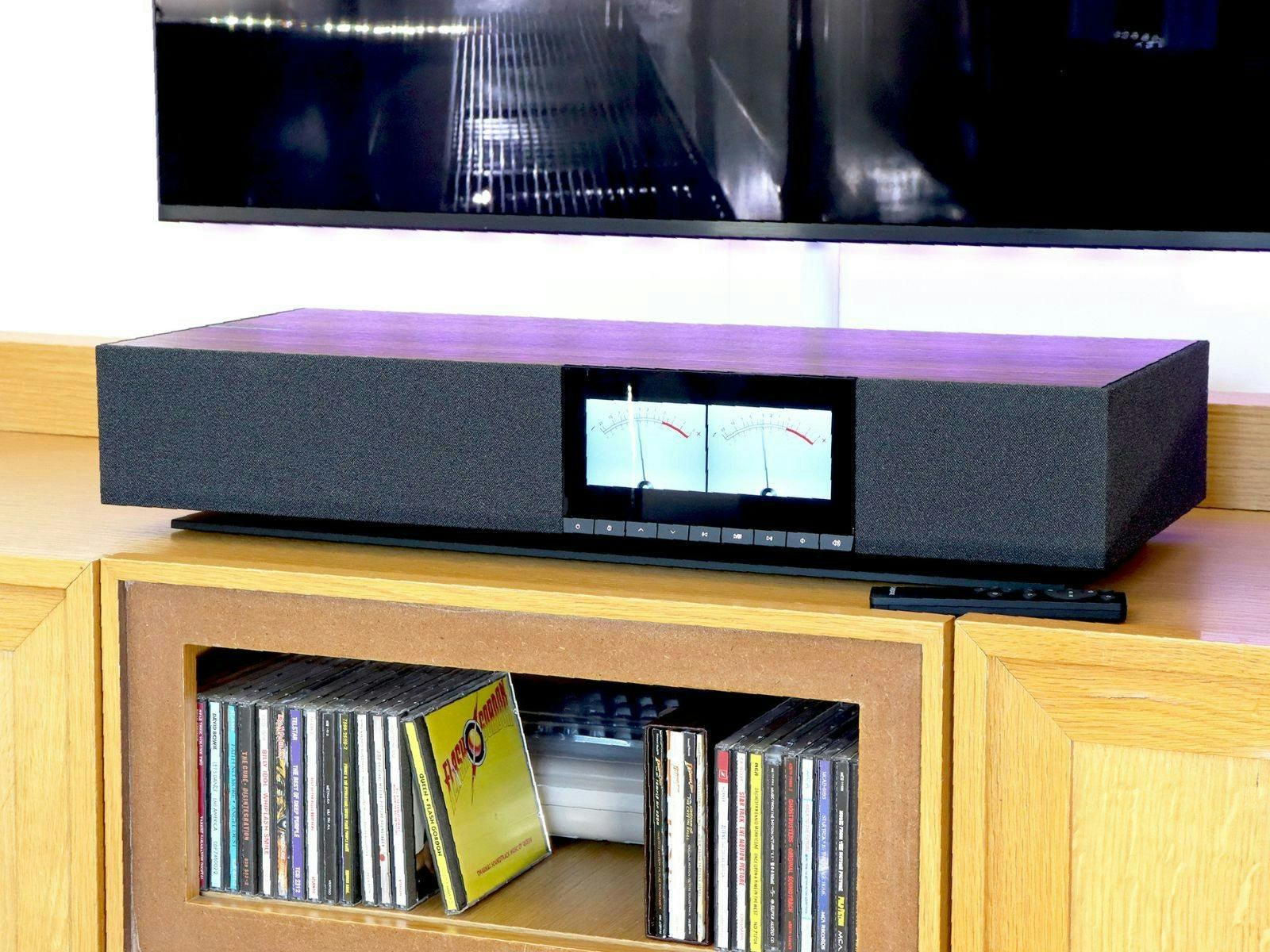
Upon lifting the Evo One from its substantial box, we bought into Cambridge Audio's pitch that it really could be 'the ultimate All-In-One Wireless Streaming Speaker'. It might be the size of an elongated briefcase, but it definitely weighs the sum of its rather substantial parts. The walnut top and wrap-around fabric speaker grill just screams quality and the overall minimalistic design (courtesy of CA's Red Dot award-winning designer Ged Martin) was an immediate low-key fit for the room. We soon had everything plugged in and fired up, ready to find out if the abundance of internal speakers were going to earn their keep.
First impressions of the Cambridge Audio Evo One speaker
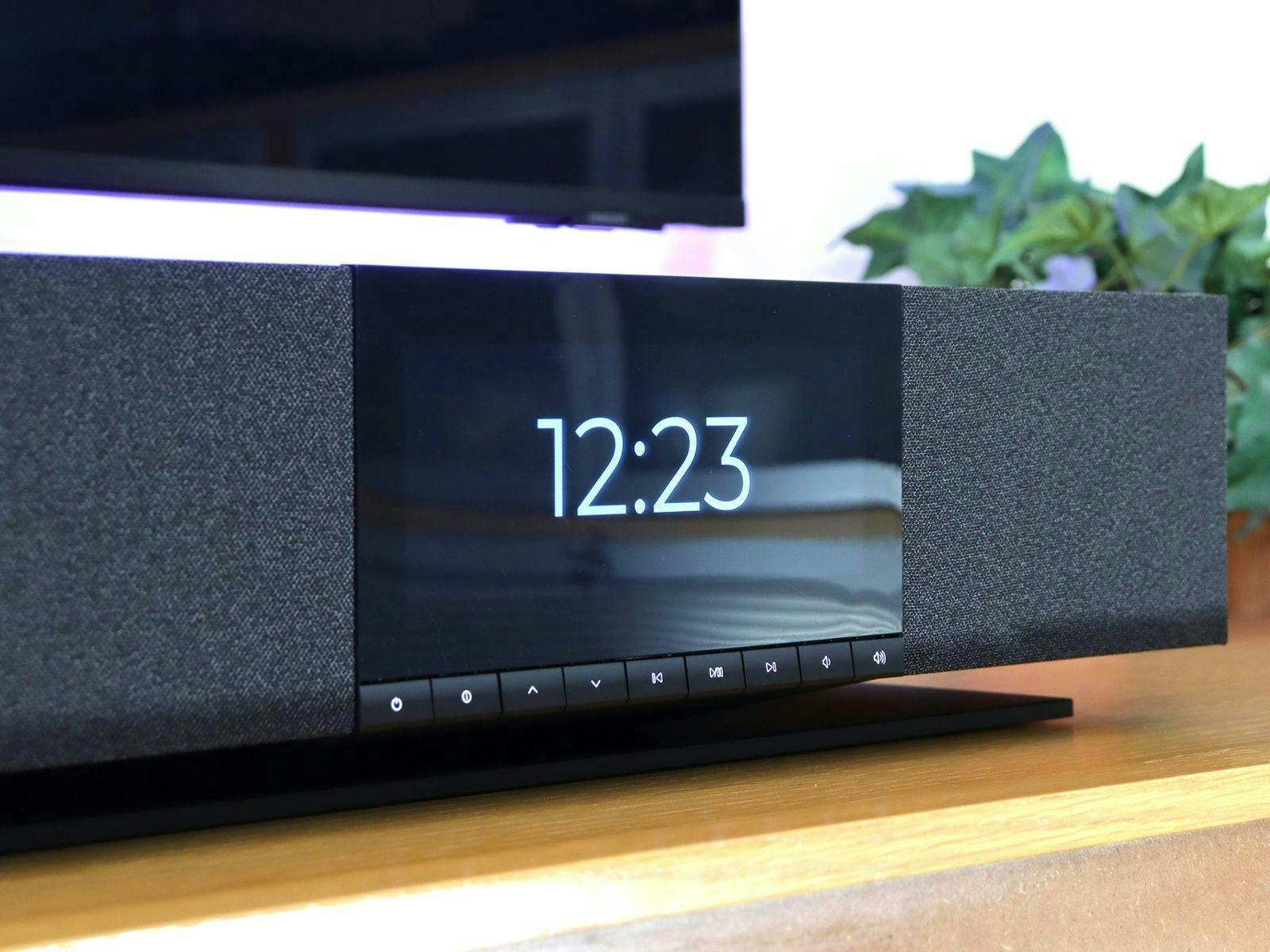
We really like the concept of the Evo One. It's clearly for those who want their audio and build quality to rival more complex (and potentially more costly) hi-fi systems, but take up less space and still connect to their various music apps and hi-fi kit.
A quick glance at the playback spec and it's impressive: Wi-Fi and Bluetooth capabilities allow for easy streaming of music, podcasts and more. Integrated support for platforms like Spotify, Tidal, Deezer, Qobuz, Roon and more means you can stream as well as access your own music library over your network, plus there's support for high-res formats. And all of that wireless goodness is accompanied by a decent handful of digital and analogue inputs – including the option of hooking up a turntable without a built-in preamp. We love listening to vinyl, so it was another element we couldn't wait to put to the test.
Specifications aside, it cuts a rather striking silhouette. The Evo One looks even more 'audiophile' than the price suggests. Its simple lines, walnut top and uncluttered layout evokes a simple utility that we often miss in an age of touchscreens and labyrinthine menus.
Design and build: Heavyweight minimalist design
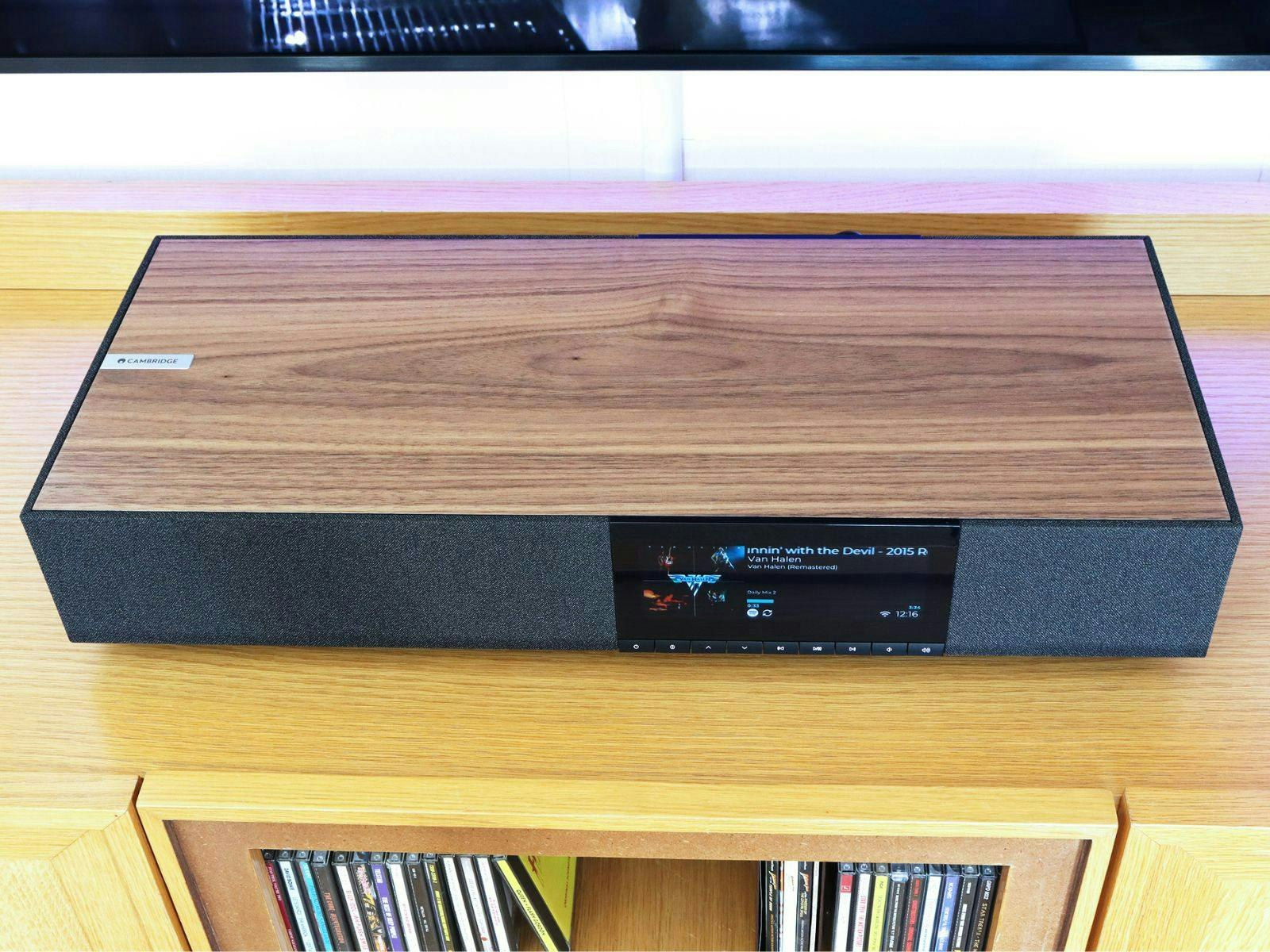
There's a gorgeous simplicity to the overall design – and not just due to the high-end materials used. Visually, you're looking at a generous slab of walnut edged with dark grey fabric and a large well-integrated display. Other than a fairly discrete row of controls and the steel Cambridge Audio logo, we think that the Evo One is something of a work of art.
We really wanted to see all fourteen of those cones and domes – six long-throw woofers, four mid-range drivers and four tweeters. Plus, it's always good to know how to remove things for cleaning if needed – so we slid the two grill sections away to reveal the stunning array behind. Looking under the hood is rarely as beautiful and well-arranged as this. Even the grill is designed to work with the sound waves of each speaker type, with larger or smaller honeycomb formations depending on woofer placement.
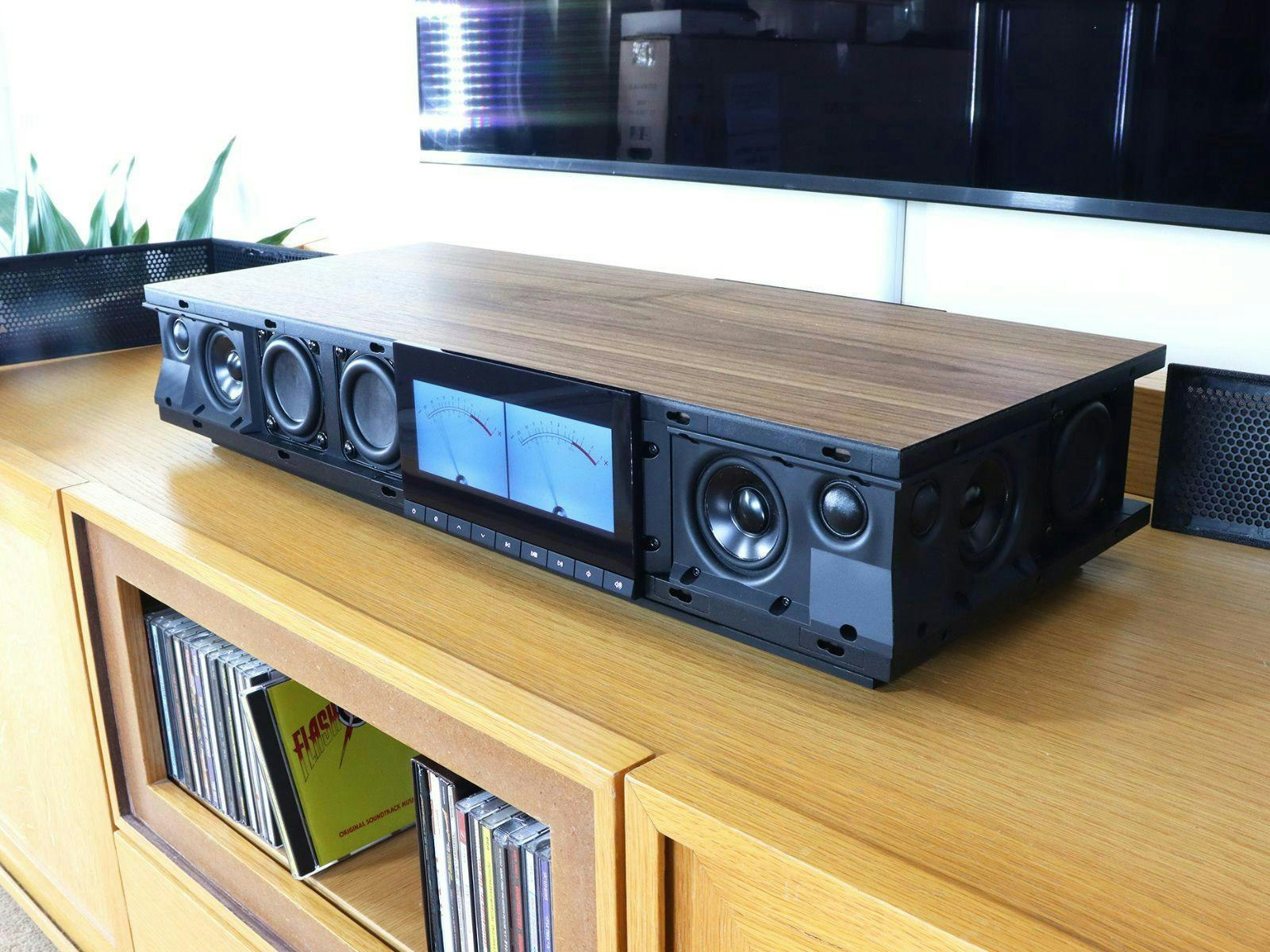
Underneath, in a refreshing change from the usual four dampened feet found on most stereo equipment, is a single rectangular base. Inset enough to be out of sight, it seemingly levitates the Evo One an inch off the surface. Though a bit of a dust trap and a tricky place to clean, at least it's largely out of eyeshot.
Now to another question that rattled around the room throughout the unboxing: despite its fairly hefty price tag and audiophile looks, could it actually deliver the sort of premium audio clarity and range that we expected from it? The Evo One would have to demonstrate more than just unbridled power and extra range, it would have to have a large degree of expertise and finesse to pull everything together.
Time to set things up for a serious listening session.
Setting up the Evo One: Wi-Fi, digital and analogue connections
Setup relies on the StreamMagic app which we downloaded for iOS. Although this advised us to set up the speaker as a new Airplay device, on our phone this option was actually under the settings for the current Wi-Fi network. But, having selected the Evo from the list, the phone shared the settings and it was online in seconds – with access to Spotify, internet radio and more. Now to connect the rest of the kit.
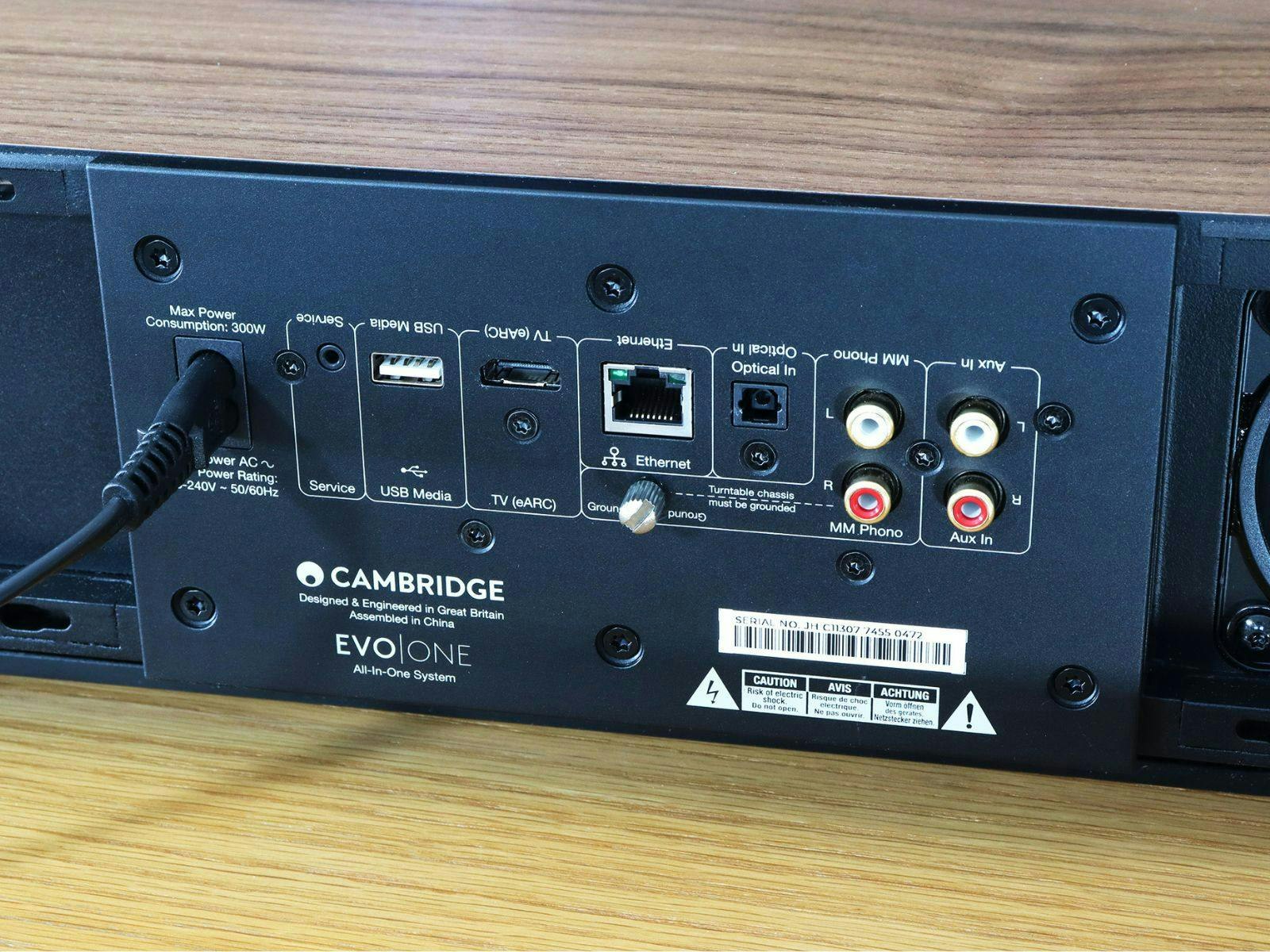
Even with the best looking devices, we're used to the back panel being something of a design afterthought. Not here though, and that's largely due to that wrap-around speaker grill which integrates the panel and its ports and connections neatly. We also appreciate the mirrored port labels.
The panel is home to a cluster of analogue and digital inputs: Aux In, Phono input (plus ground terminal), and Optical input. There's an ethernet port for those who prefer wired networking plus a standard USB-A port for external storage drives. Lastly, the TV connection is an HDMI port with eARC support. To begin with, we connected a Samsung TV, Audio Technica AL LP-140 turntable, Panasonic CD player (via optical) and a USB stick preloaded with MP3s.
Controls: Buttons, remote and the SoundMagic app
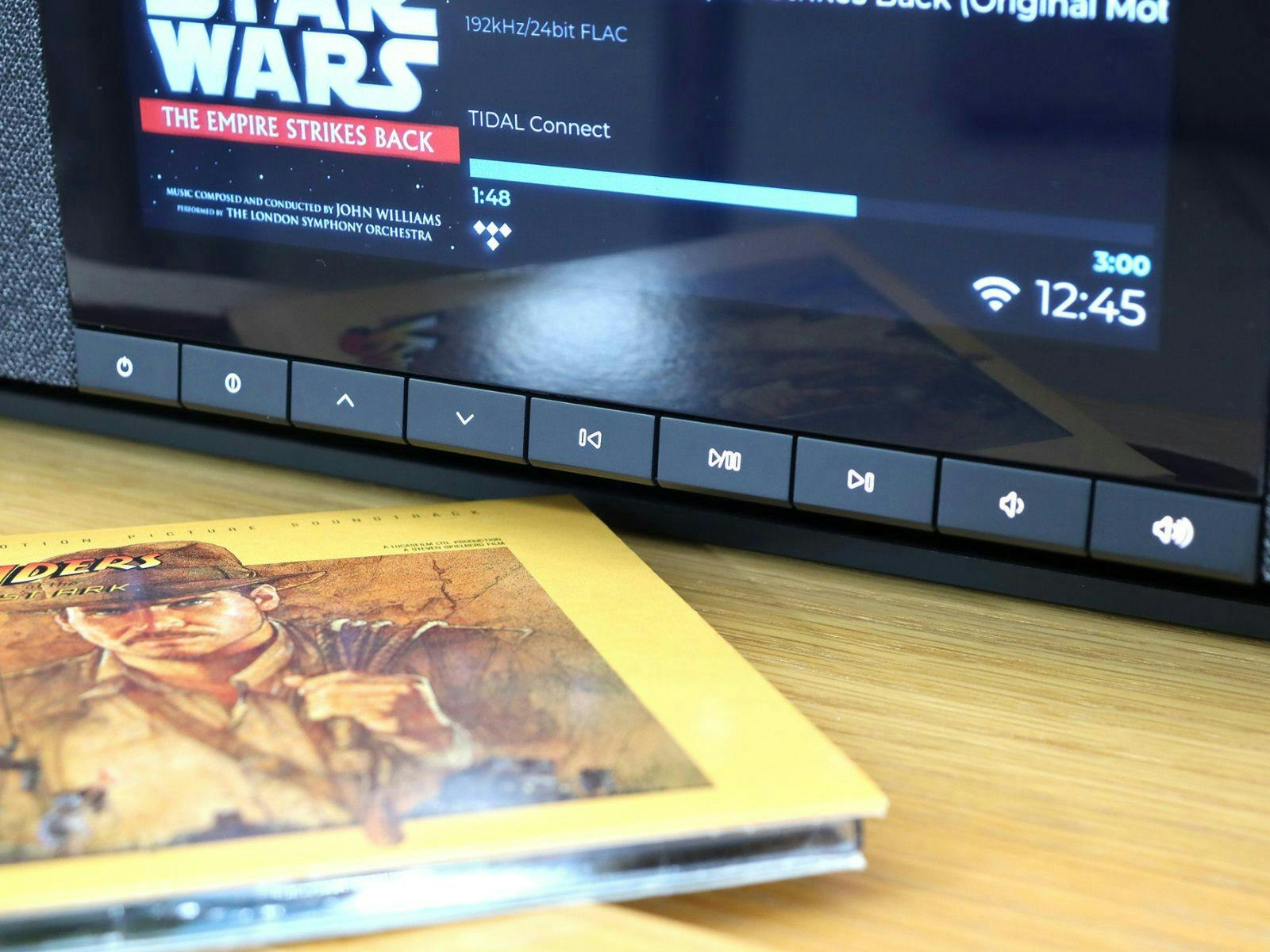
We really love the illuminated front-facing controls – they're very 1990s and reminiscent of the Yamaha Natural Sound CD players some of us owned back in the day. They're clean and simple, with tactile feedback when pressed. Again, a refreshing change from the temptation to make the display a touch screen – we know we're not alone in hating fingerprints, so this decision is appreciated in more ways than one.
The Evo One also comes with a fairly uncluttered, if standard-looking, remote with access to all of the usual functions. Having tested all-in-ones with volume controls that actually only have 10-20 steps, one feature we are huge fans of is the granular control over volume. Using either the remote, front panel or the app, you get a true step up in volume for each of the 100 levels.

As for multi-room capability, it's possible to pipe music and control the Evo One by talking to your Google Home devices, or using it as an Apple Airplay or Roon device. If you're using this in an Alexa-based home, your only real option for integrating Alexa with the Evo one is to plug an Echo into the Evo's Aux ports. We do think it's a (small) pity that the Evo One doesn't have a voice assistant built-in.
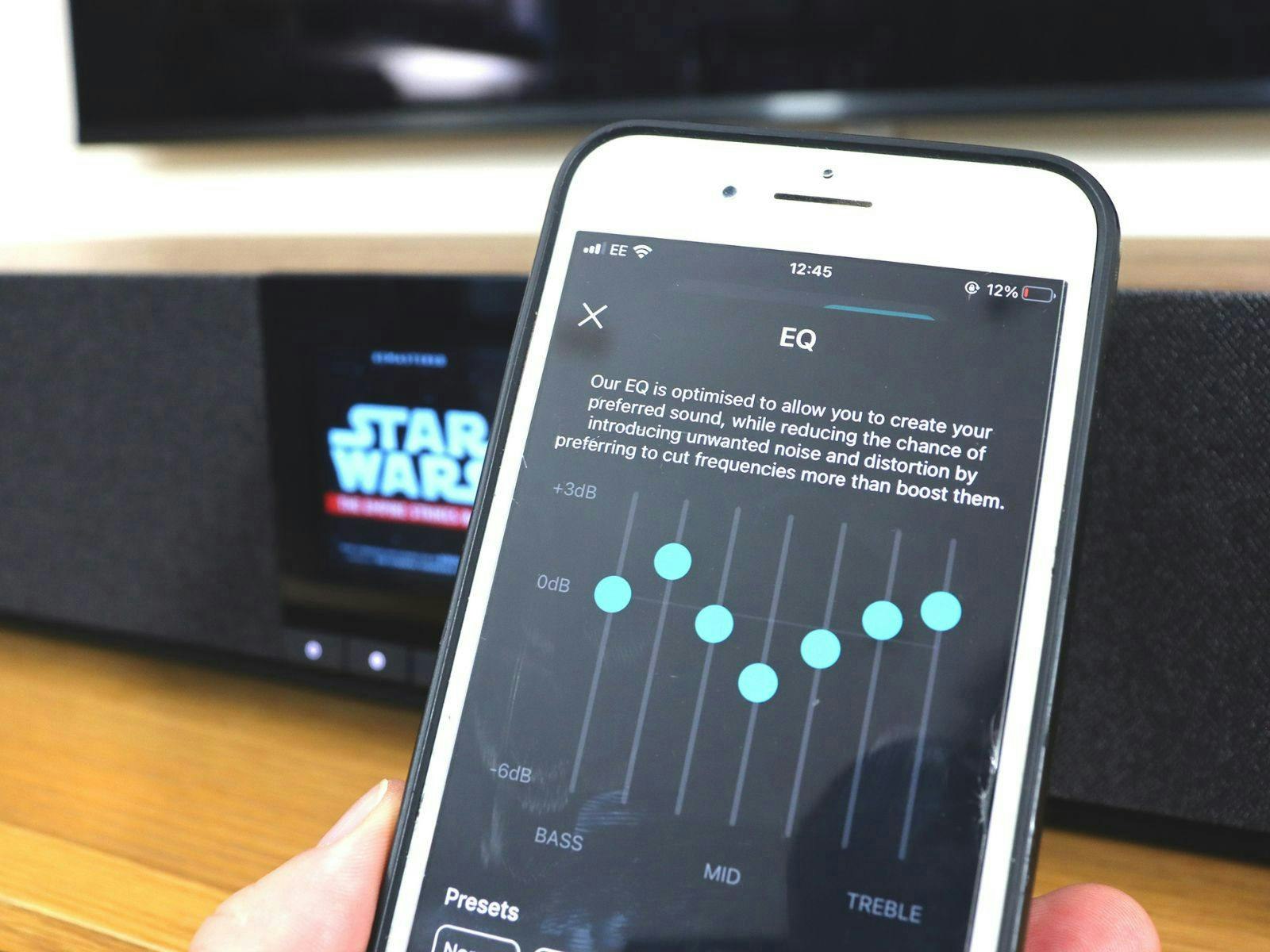
The SoundMagic app is fairly well laid-out, but its volume controls were a little tricky to locate. There are also some really comprehensive EQ controls and presets – brilliant for quickly switching between equalisations for movies, treble reduction, bass boost and so on.
However, one star feature was being able to adjust the default volume level for each source. We could knock some down by several decibels, meaning that the TV and other sources are on a par with the notoriously low volume that our Plex server delivers. We also used the app to set the distance between the speaker and the rear wall which compensates for any reverberation – handy, especially with the Evo One's handful of rear-firing speakers
Display: Album art and virtual VU meters light up your listening
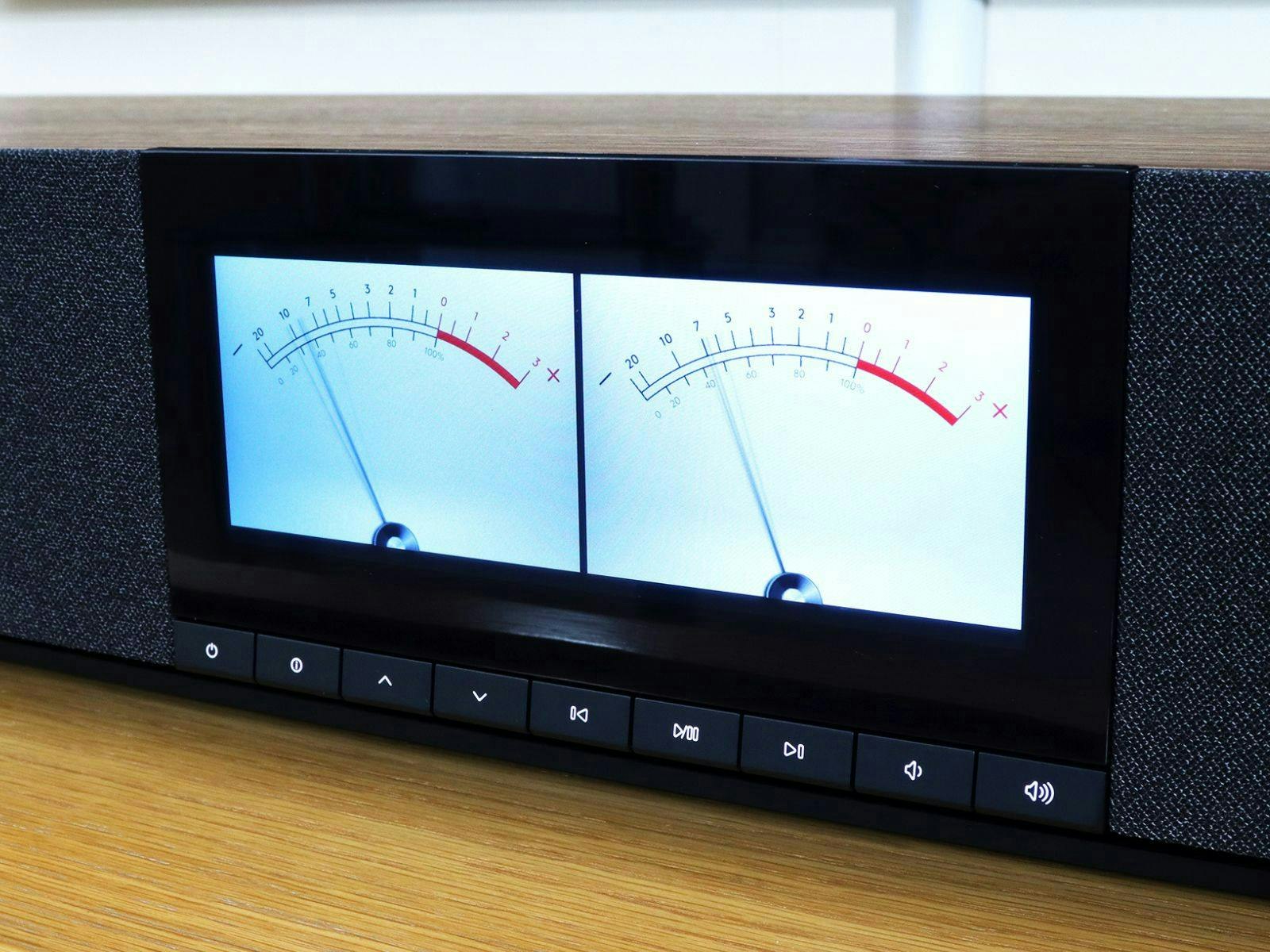
A quick button press on the remote or front panel and the screen will cycle through a few display options. Here, we found that the option to display artwork and track title really adds colour and interest to the room. But it's the virtual VU meters that quickly became a firm favourite.
Being fans of vintage hi-fi separates, they remind us of iconic audio kit like the AKAI reel-to-reels of the '70s, its VU needles bouncing along with each track. Given that this is just a clever digital reproduction, the lighting effect and responsiveness are quite convincing.
The clarity of the display and the size of the text are extremely user-friendly too, especially when selecting inputs and changing volume from afar – the station and track names are legible from a couple of metres away.
Performance test: Spotify, Tidal, radio, CD, vinyl and more
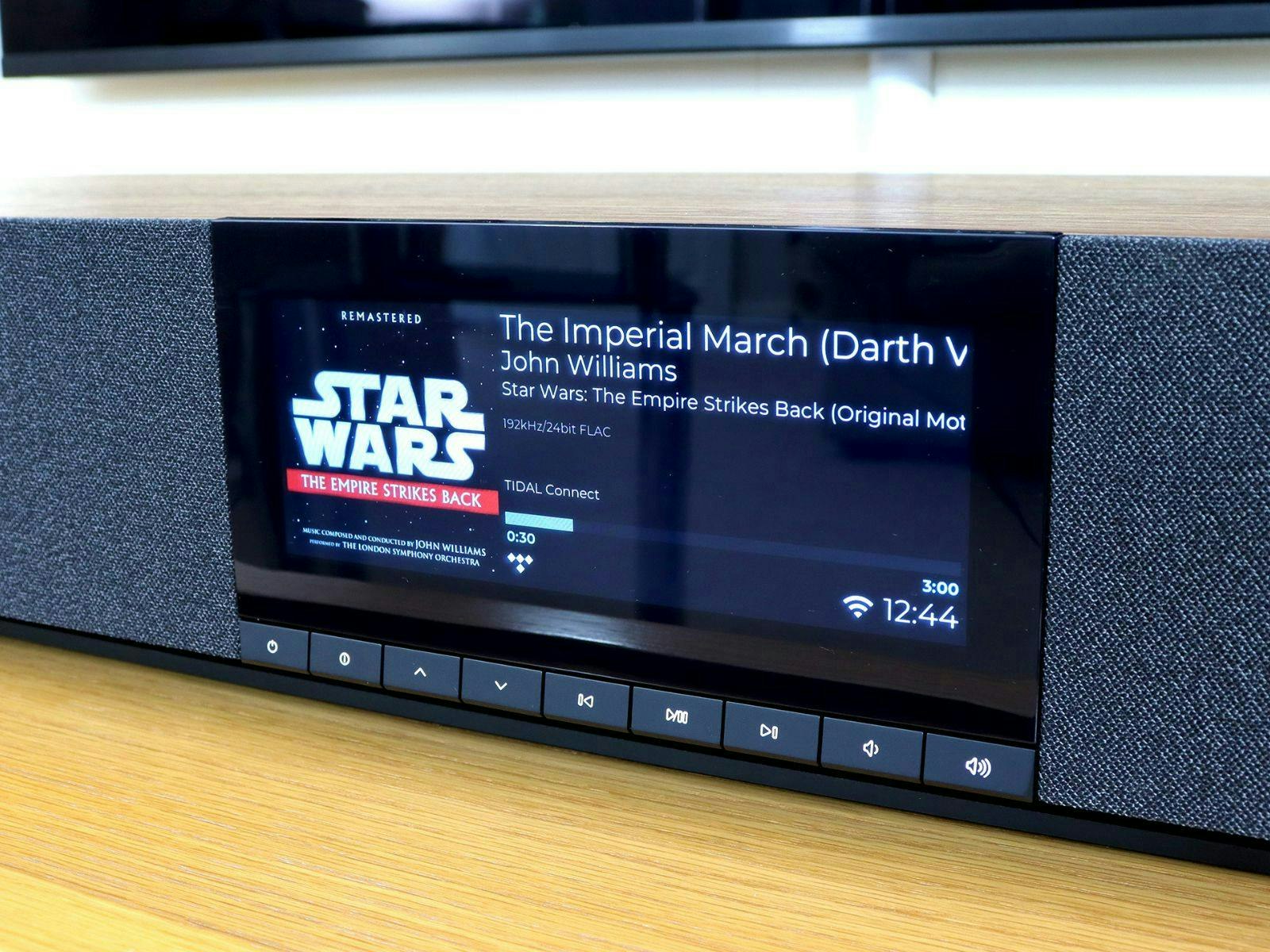
Spotify Connect
Kicking things off with a genre that often ends up muddied by lesser systems, we used Spotify Connect and a rock and metal playlist. This had fantastic separation and directional sound. Peeking out above the bass, lead guitars and vocals, the triangle in Sweet Emotion by Aerosmith really did project itself into the air. The churning bass of Black Sabbath's Supernaut was a room-shaker with loads of midrange and vocal detail, too.
Tidal
If there's a genre of music that will betray low bitrates or compression issues it's orchestral music. Tidal offers lossless audio in the form of FLAC (Free Lossless Audio Codec). As one of the Evo One's integrated services, we fired up the app and cast End Title from Vangelis' Blade Runner, followed by The Imperial March from John Williams' Star Wars: The Empire Strikes Back . Although we had to change the Evo One's EQ to best suit the profile of orchestral music, the end result was wonderfully nuanced with more depth and range than we're used to.
Turntable performance

Technically, the Evo One is a great option for record fans thanks to being able to connect a deck with an existing phono stage (or an external preamp) to an aux in. Or, if you want to use the Evo One's integrated phono preamp with a deck without one, you can plug into that. For turntables with a moving magnet cartridge there's a ground connection too. We took Bowie's Let's Dance for a spin, followed by Fortunate Son from Creedence Clearwater Revival. The sound was rich and detailed, but also wonderfully organic. The built-in phono stage is clearly more than up to the task, and it made our Audio Technica AT-LP140 turntable sound a tad warmer than with the Marantz PM6007 amp and KEF Q350 speakers it's normally paired with.
Compact discs and the Evo One DAC

Knowing that the Evo One has a DAC (Digital to Analogue Converter) built into it, we threw on some CDs and hoped that the speaker would smooth off those harsh edges. First up was John Williams' Raiders of the Lost Ark. This blew us away, as the separation between strings and bass instruments, plus the natural realism of the audio, was enthralling.
Second disc in the tray was Technique by New Order, with the hypnotic Dream Attack and its eclectic mix of guitar, drums, piano and synth. It all sounded suitably warm and balanced for an optical digital source – even at the (often overly bright) high-end range.
Internet radio, network and USB playback
As expected, we noticed less of a difference here with rougher sources, like internet radio stations and lower-quality MP3s played back via USB stick. The stick playback works as expected, as did the quick and easy link with a home media server. Although not restricted to files from USB, the Evo One's list of supported formats is staggering – with over ten, including WAV, FLAC, ALAC, Ogg Vorbis, and of course MP3 in variable and constant bitrate formats.
Performance test: TV and movies

With fourteen speakers pointing in every direction apart from upwards, it does strike us as something of an oversight that there's no actual support for advanced surround home cinema formats like Dolby Atmos. This is especially true given the Evo One's HDMI connection is the eARC version which can support higher quality streams.
We found ourselves not caring one little bit about any of that.
We've never heard such clarity and directional audio from a non-Atmos speaker. It clearly handles left and right channel separation with amazing agility. It's setup for wide-field sound (again, not 5.1 or movie surround) plus the frequency separation that those fourteen speakers achieve, makes for something that you'd swear is at least 5.1 home cinema audio in terms of frequency response, separation and clarity. Unlike actual surround sound AV systems there's no intelligence behind that surround-like effect, but it's hard to care when the audio itself sounds this good.
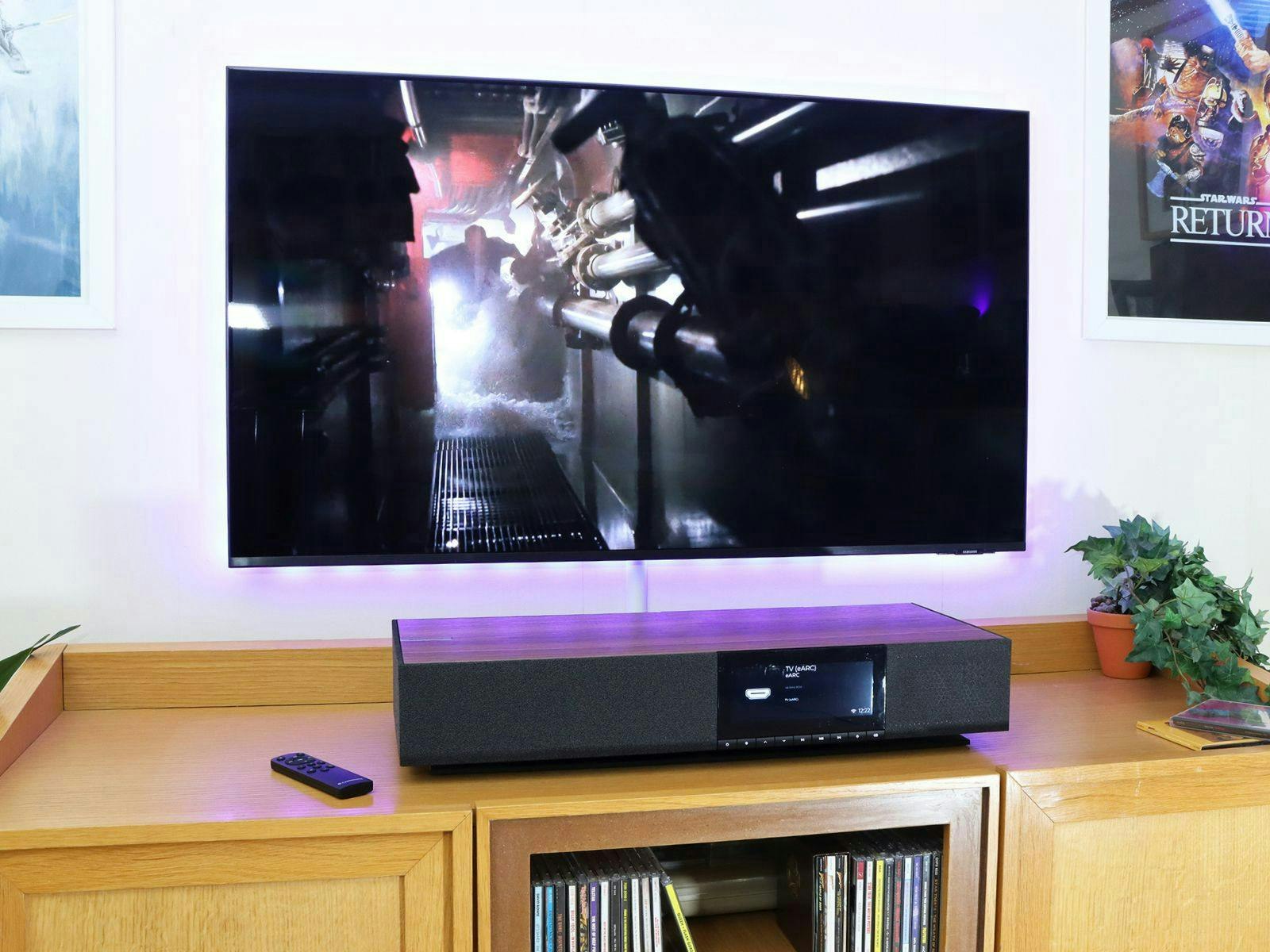
We watched a range of shows and movies throughout testing, but the notable ones for audio were Matt Reeves' The Batman, James Cameron's The Abyss, and Silo from Apple TV. All three have Atmos sound. Again, the Evo One won't decode that, but it still seemed right to test it using the best possible sources, as well as with everyday viewing like YouTube.
All that said, using the movie EQ in the app resulted in clear forward-firing dialogue and a full range of audio elsewhere, creating a convincing soundscape throughout the room – particularly from left to right in action sequences. The sound of rushing water as Ed Harris clambered through a flooding Deep Core is a particular highlight. Silo's audio mix was also a joy to hear, its dialogue and effects were crystal clear, even against the backdrop of the Silo's generator room.
The car chase scene from The Batman had every drift, screech and over-revved engine tracking across the room as it should, with high-frequency damage firing sideways through those tweeters and some serious low-end muscle car grunt. On sheer volume, clarity and range, it beats a mid-range Atmos soundbar and subwoofer setup hands-down. That's not to say that, being an all-in-one unit, the Evo One is a substitute for a pair of well-distanced speakers (or Atmos) in terms of separation – but it's still seriously impressive.
Perfecting the sound: Equalisation and room compensation
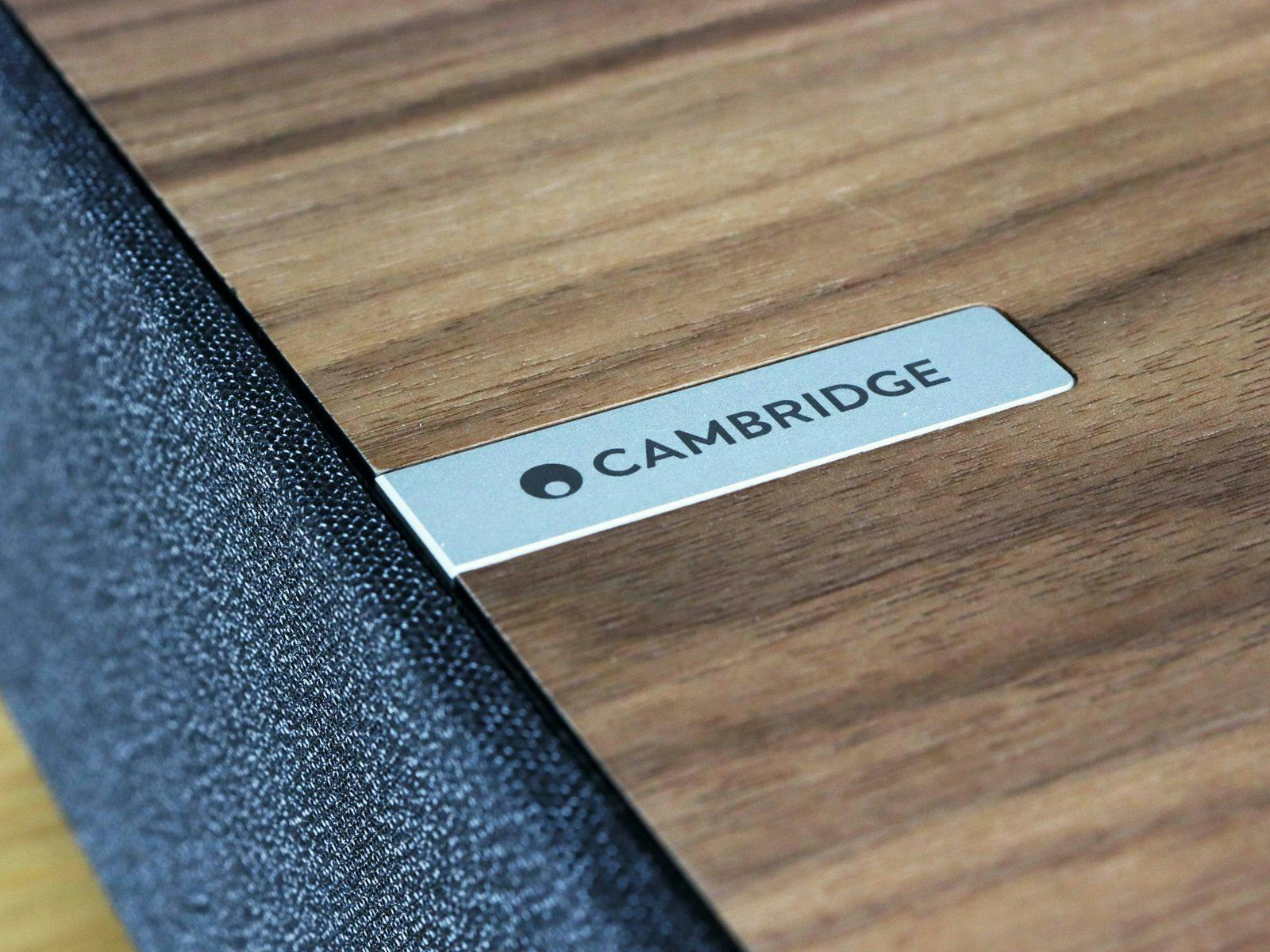
We really love the control that the app's EQ screen gives you. With the Evo One's fourteen speakers at play, we could really hear the difference our tweaks were making – including dialling down a slightly unruly bass. However, one of the few limitations of this speaker is that there's no way of assigning a favourite EQ setting to each source. In other words, switching to watch TV should automatically switch to the Movies preset (or whatever EQ we prefer), for example. As it is, you're never totally free of your phone or tablet, even with the Evo One's remote in-hand. If you want to switch sources you'll need to select your preferred EQ settings in the app. Perhaps Cambridge Audio will add this as a future firmware update.
The room compensation feature isn't as advanced as, say, the acoustic room analysis that we've used with devices like the Sonos One Gen 2. Here, there's a simple slider that you can place somewhere between a picture of an uncluttered large space and a tighter room space with more furniture in it. We could hear a definite difference between settings but it's a case of choosing what you like the sound of rather than anything too scientific.
Overall sound quality
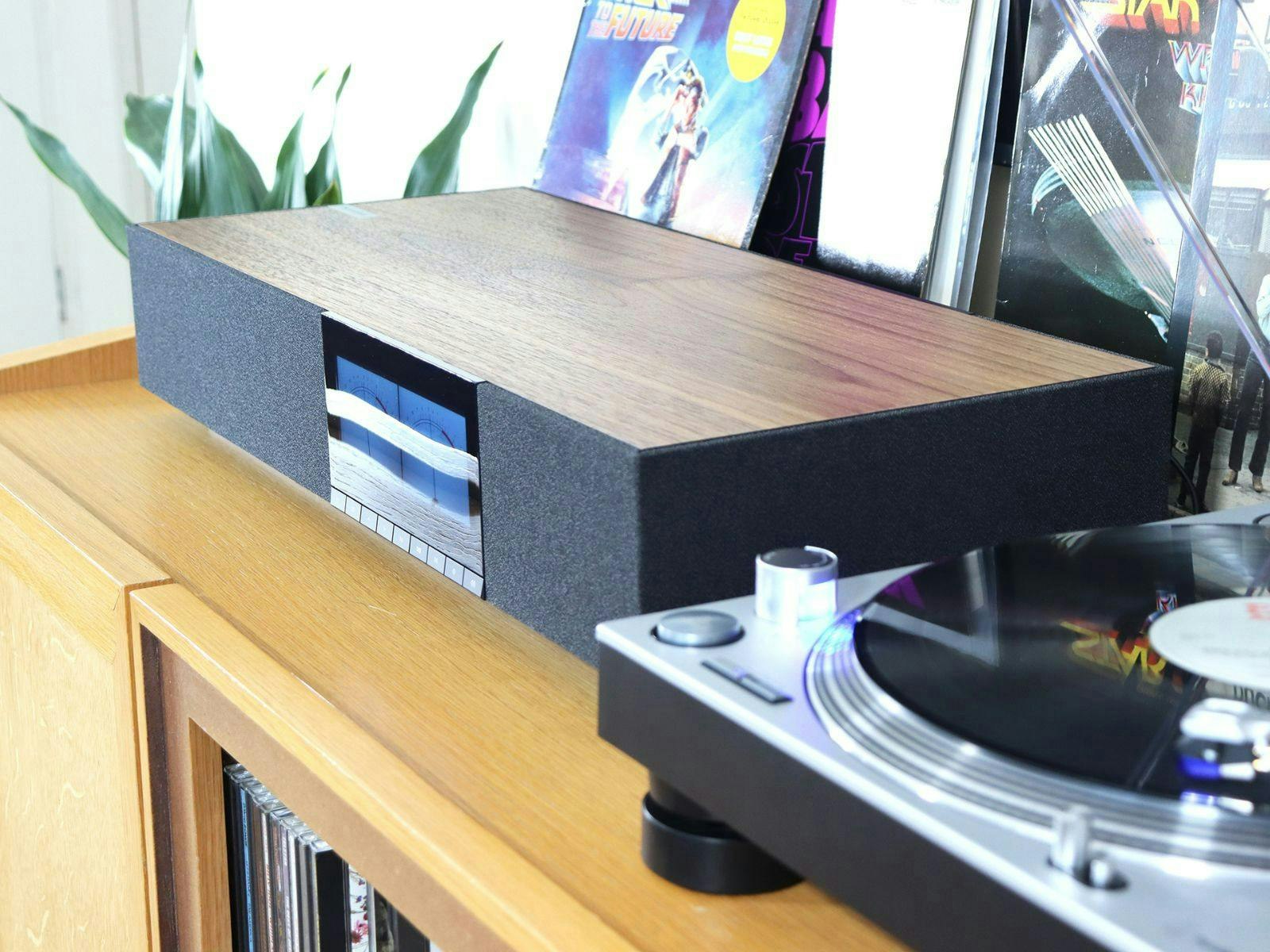
For music and movies, performance at lower volumes is very good but somewhat subdued – but the dynamic range of the Evo really comes to life at mid to high volumes, with excellent clarity and separation. There's a hefty but controlled bass (once we'd tweaked the EQ in the app to suit) that never threatened to overwhelm those equally well-defined and coherent mids.
In stark contrast to many other systems we've tested – both all-in-one streamers and hi-fi separates – the mid range is incredibly unmuddied. We're not used to hearing instruments and vocals in this range with so much individual character. Rather than being overwhelmed by weighty bass on one side and an overly-bright treble on the other – typical on lesser speakers – here they have a lot of room to breathe without feeling detached from each other. Lastly, there's a crisp but well-rounded high-end that somehow avoids poking holes through the rest of the soundstage.
Comparing the Evo One to other all-in-one streaming speakers
Given its considerable speaker-count and unique looks, finding genuine alternatives to the Cambridge Audio Evo One is a bit of a challenge. But you do have a couple of alternatives.
For us, the closest thing to the Evo One is the Ruark Audio R410. It also comes in a walnut finish, but it's more reminiscent of a vintage receiver thanks to the front grille. It's also around the same price as the Evo One, supports an almost identical list of streaming services and radio stations, and has eARC HDMI for your high-end TV. You'll find connections for a turntable and optical and USB inputs too. The key difference comes in the form of audio power. Although it also has a Class D amp, it only has four speakers (two woofers, two tweeters) delivering 120 watts total. The display is also smaller than the Evo One. In contrast, each of Evo One's fourteen speakers deliver 50 watts for a superior total wattage and, quite likely, sonic range and separation due to the inclusion of four mid-range drivers.
That said, the Ruark does support separate subwoofers and has a DAB/FM aerial input for live reception, both not found on the Evo One.
Lastly, if you're on a slightly tighter budget but love the whole 'horizontal slab of minimalism' thing, the NAIM Mu-so 2nd Generation all-in-one system is a few hundred pounds cheaper – but you will have to make some concessions. It's aimed at streaming fans, with great support for high-res formats, Wi-Fi streaming and multi-room. But there's no display to be found – only a touch sensitive control dial. So, you'll be using the companion app or remote control for almost everything else. Inputs are limited too, with only one analogue input (3.5mm jack) and optical and USB ports for digital playback from external devices. There is though an HDMI ARC for TV connections. Think of it as an 'Evo One Lite'.
Who should buy the Cambridge Audio Evo One?
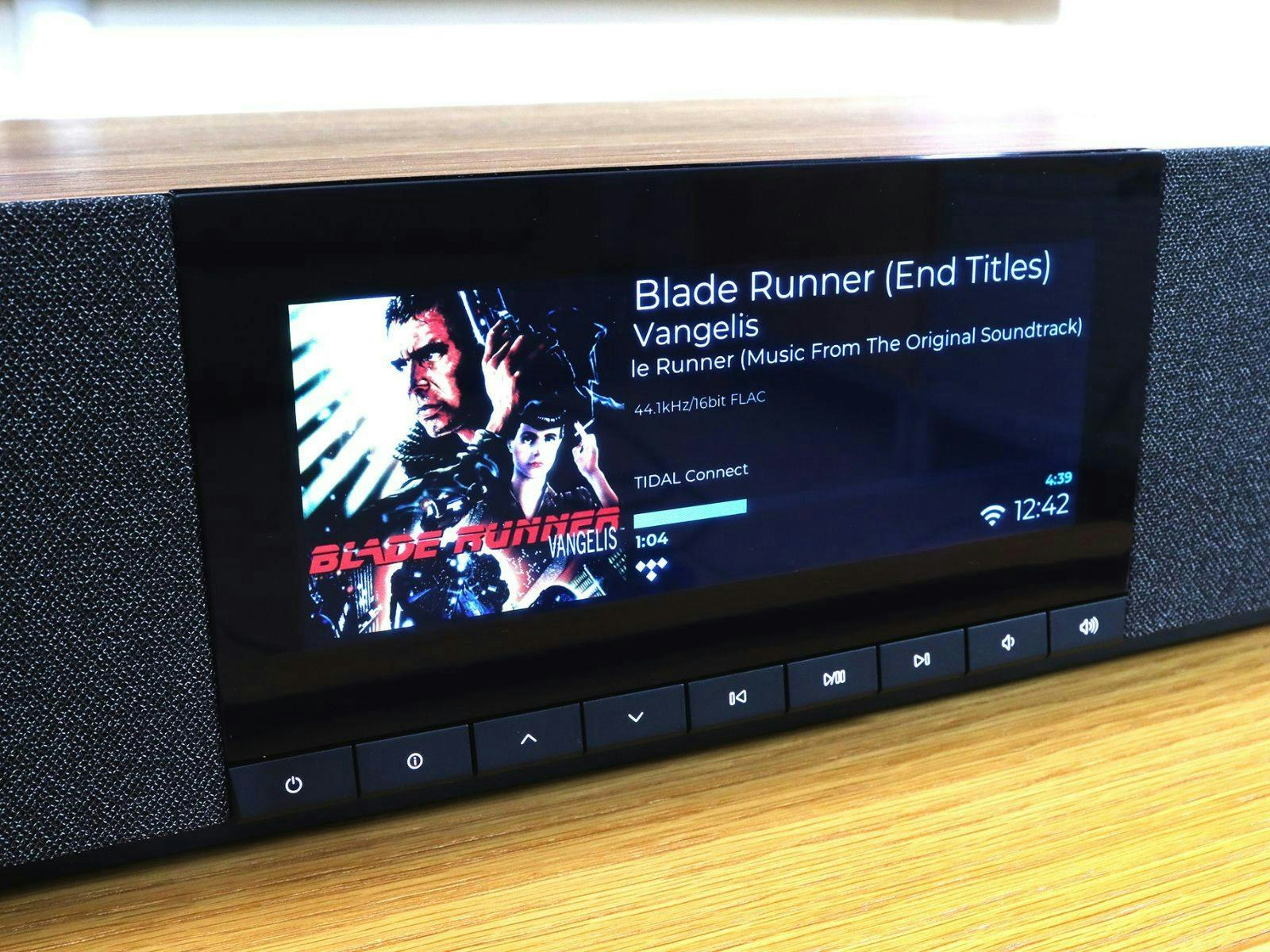
The Evo One is a fusion of sheer audio performance, simplicity of design and quality of build that's rarely found outside showrooms stocked with elite audiophile kit. This speaker is for those who value the simplicity and refinement of minimalist design too, making it ideal for anyone who wants their audio kit to make a statement without overpowering the room.
This is a premium product, but if you've embraced streaming audio with as much verve as you have for your record or CD collection, it's an all-in-one solution that elevates and naturalises whatever sound you pipe into it. That makes the Cambridge Audio Evo One a supreme choice for anyone who needs a single unit with the flexibility to play audio from their smartphone, tablet or streaming service one minute, and watch a movie or spin a record the next – all with a range and clarity that we rarely hear from a speaker this size.
Final verdict: Can this all-in-one streamer really do it all?
On the Evo One website, Cambridge Audio make the bold statement that this device is: 'an effortless listening experience that brings your music to life.' We normally don't pay much heed to this sort of marketing phraseology, but in this case we wholeheartedly agree. The Evo One not only looks good enough to deserve prime placement in your room, but it earns it too. Fourteen speakers, a lot of audio know-how and a refreshingly simple design transformed our movie and music listening.
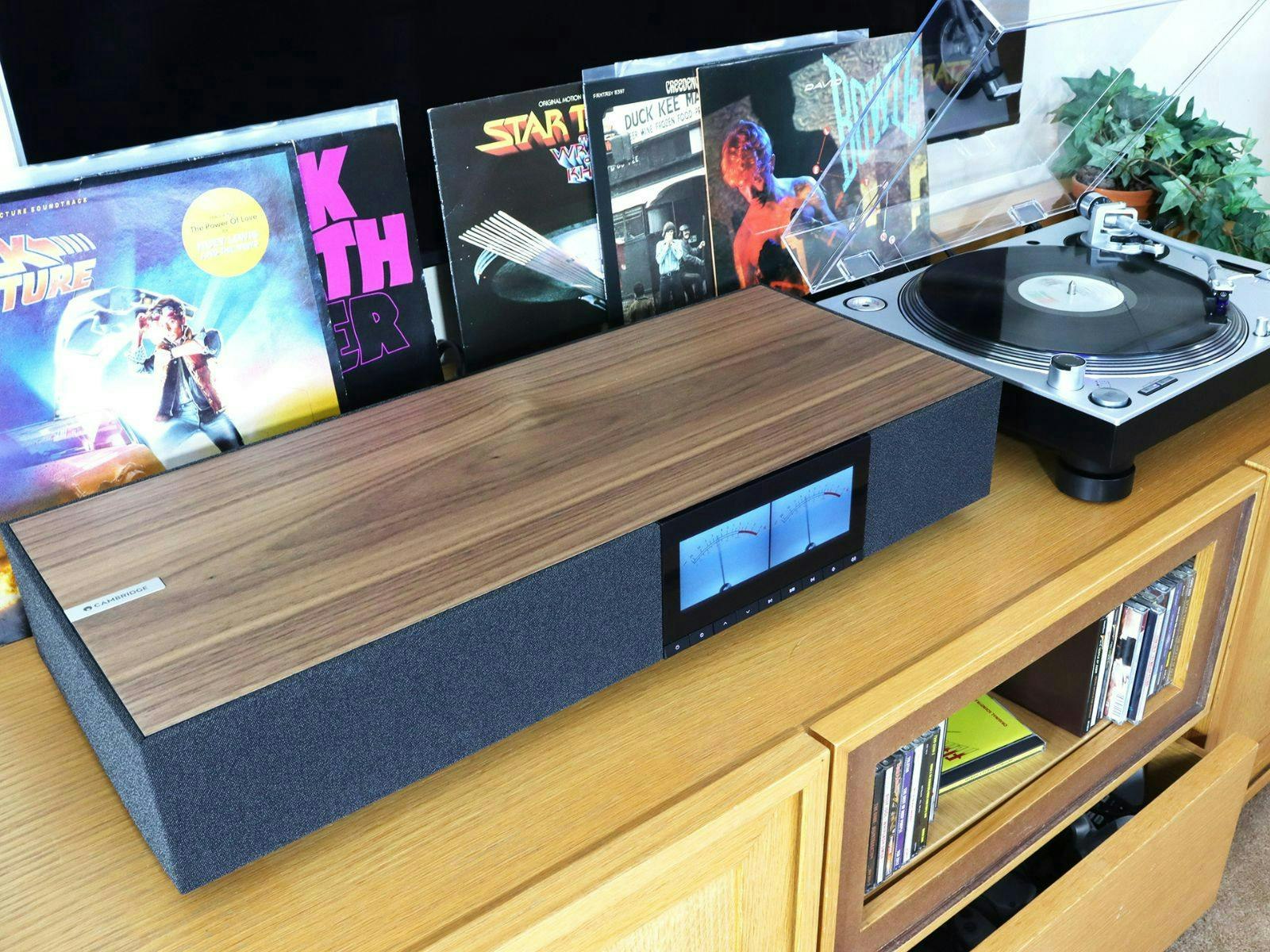
More all-in-one speakers to consider
How we tested the Cambridge Audio Evo One
We tested the Cambridge Audio Evo One wireless streaming speaker for almost three weeks. It was installed in a room measuring 20 x 15 ft and placed around 25cm from the rear wall on top of a Blok AV unit. The space is used as a living room with an average amount of furniture such as a sofa, shelving and a sideboard unit. Listening took place in the evening and daytime with only quiet to moderate occasional traffic noise outside and no household noise other than quiet domestic appliances.
For testing wireless sources, we used an iPhone with Bluetooth (and via a Wi-Fi network) to cast music from apps like YouTube as well as to control Spotify and Tidal accounts for playback via those integrated services on the Evo One. Spotify was used to test rock, metal and dance music, with Tidal being used for orchestral soundtracks in high resolution formats. We also used the Evo One's built-in internet radio tuner as well as controlling that via the SoundMagic app.
For testing non-internet sources, we connected a Panasonic CD player via optical cable input, and an Audio Technica AT LP-140 turntable via the RCA phono input and ground terminal. The turntable was tested from two positions – next to the Evo One at low volume, and on a different unit for higher volume playback to avoid issues with reverberation. USB playback was tested using a USB stick in the Evo One port with MP3 files at 320kbps/144hz and lower.
For use as a TV soundbar, the Evo One was connected to a 50-inch Samsung QLED TV via an eARC port and HDMI cable. We watched a variety of content, from catch up TV services to streaming services like Amazon Prime Video, the YouTube app, and a local Plex server. Audio formats ranged from Dolby Atmos, 7.1 and 5.1 surround sound, and stereo.
The Cambridge Audio Evo One wireless all-in-one streaming speaker was provided to us by Cambridge Audio for the purposes of review. The company did not oversee or have editorial control over the review or its content.
Chris Duffill is a Senior Tech Writer and Reviewer specialising in audio-visual devices. He's written extensively for What's The Best as well as Yours, Closer, Heat and other brands. He's into music and hi-fi equipment both vintage and new and has owned and enjoyed various music formats – from the humble cassette, CD and MiniDisc, to digital files and streaming music. Despite enjoying lossless audio, pure nostalgia and large album art always draws him back to his record collection.
What's Your Reaction?























